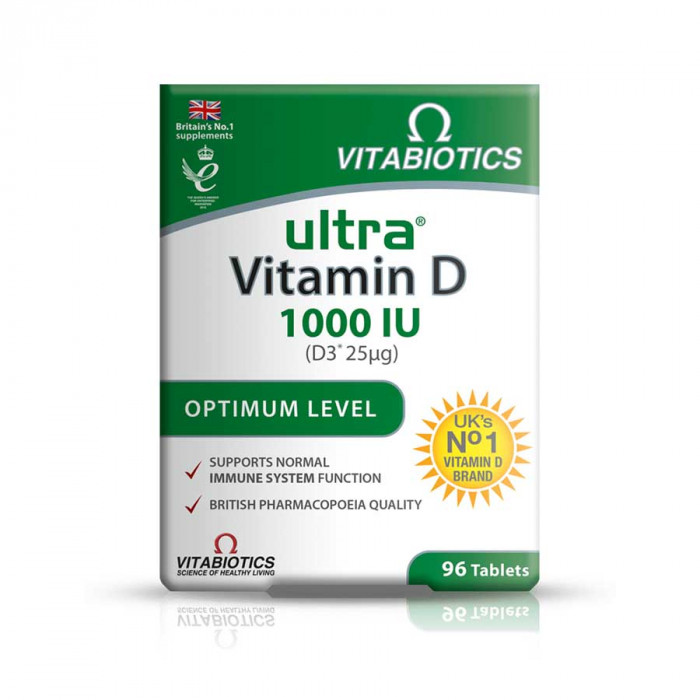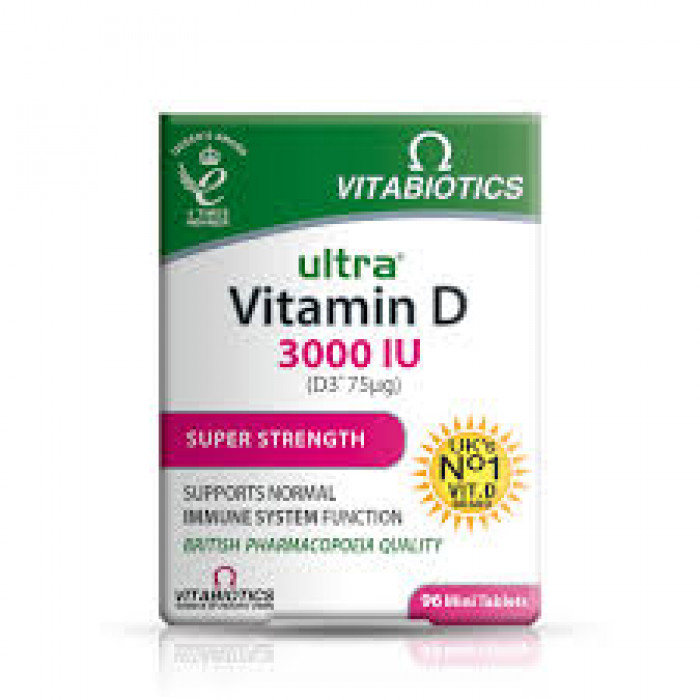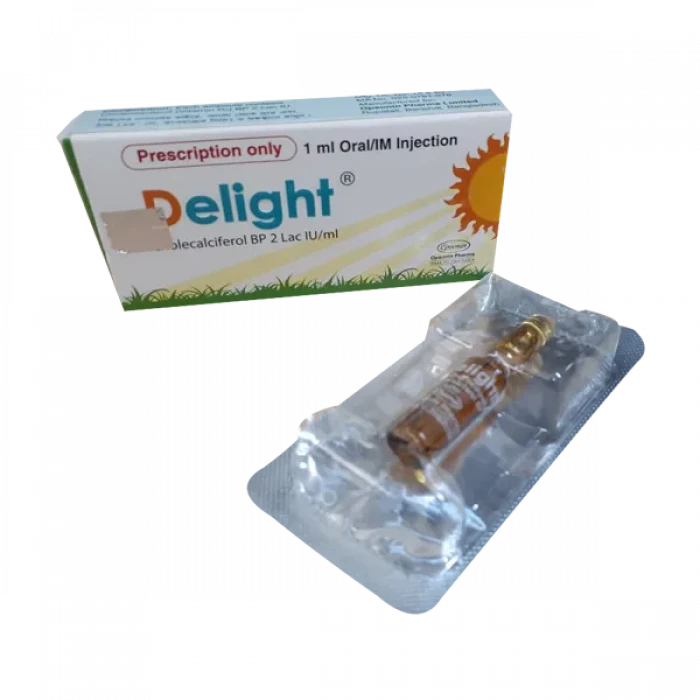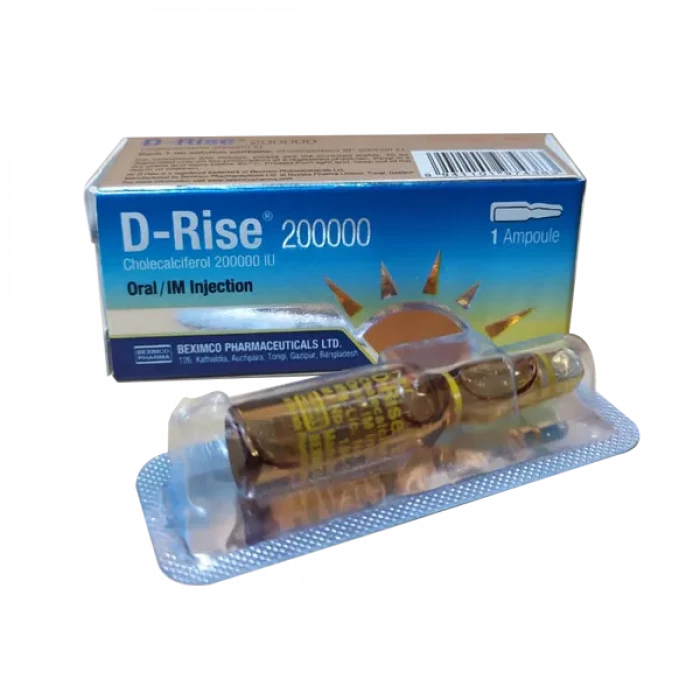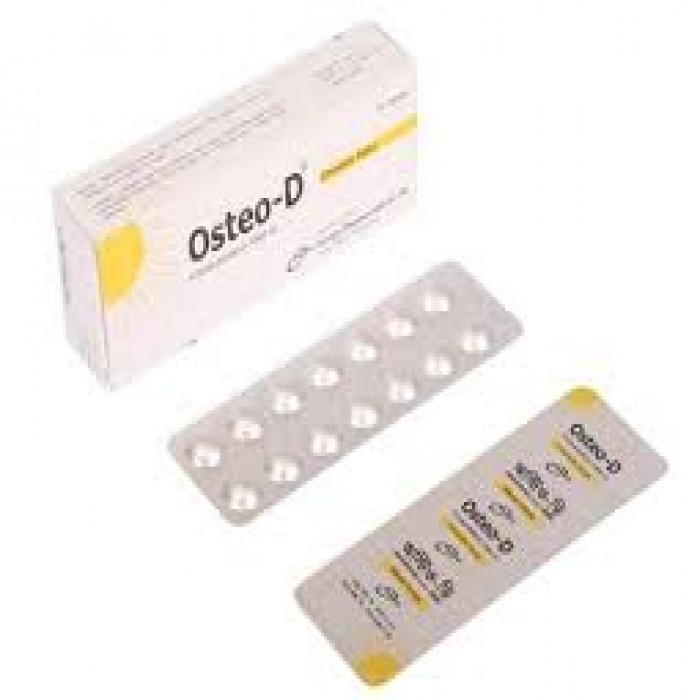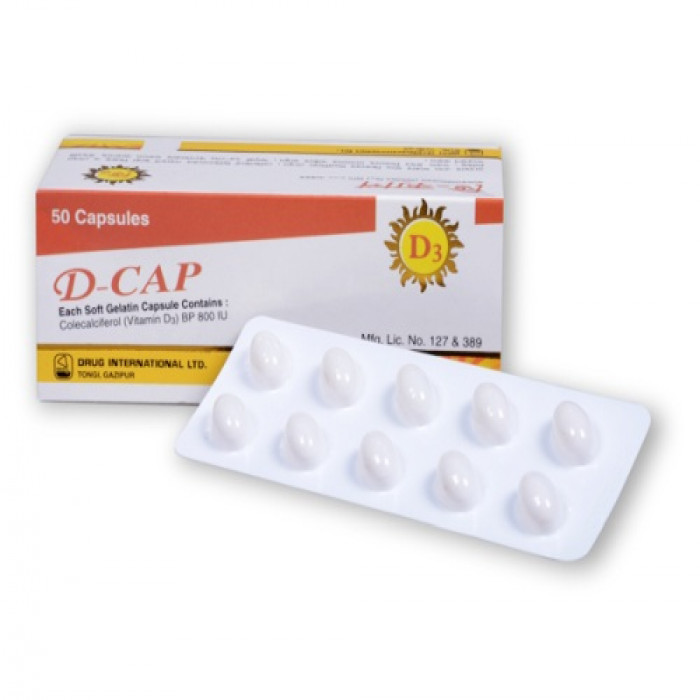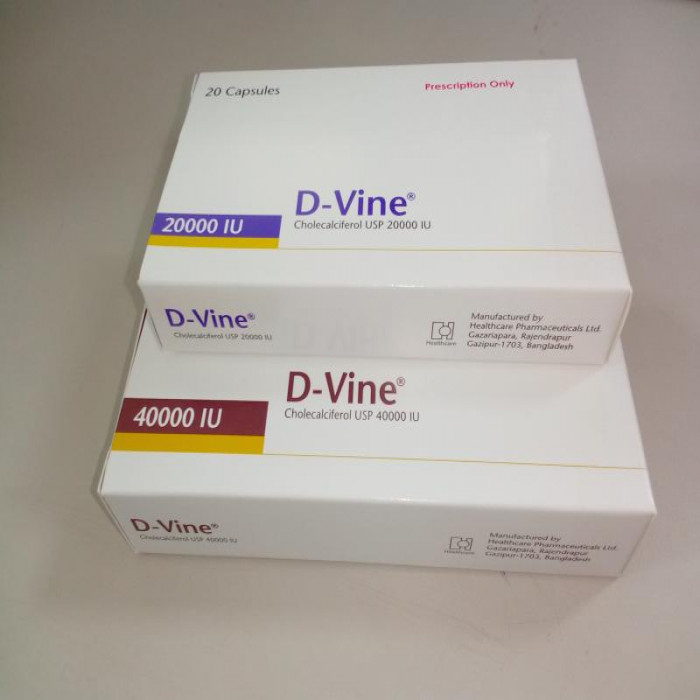
✔ 100% Authentic Product
👁️ Currently Viewing 3070
✅ Description:
Indications of D-Vine 40000 Capsule
Vitamin D3 insufficiency can be treated and prevented with colecalciferol (Vitamin D3). In patients with vitamin D3 deficiency, it can also be used as a supplement to particular osteoporosis treatment.
Pharmacology of D-Vine 40000 Capsule
Colecalciferol (Vitamin D3) aids in calcium and phosphorus absorption and reabsorption. Vitamin D3 is required for optimal bone growth and density maintenance. It also helps type 2 diabetes patients maintain optimal insulin levels by reducing the severity of bacterial infection, improving lung function, reducing the risk of cancer (breast, colorectal), and preventing cancer (breast, colorectal).
Dosage and Administration of D-Vine 40000 Capsule
For capsule: Adults:
- Treatment of Vitamin D3 deficiency: 40000 IU once weekly for 7 weeks. Doses for maintenance therapy is 1400-2000 IU/day. To confirm the target level of 25 hydroxyvitamin D, measurement of it should be determined 3-4 months after initiating the maintenance therapy.
- Prevention of Vitamin D3 deficiency: 20000 IU every 4 weeks. Higher doses may be required in certain situations.
- Addition to specific therapy for osteoporosis: 20000 IU once a month.
For capsule: Children (12-18 years):
- Treatment of Vitamin D3 deficiency: 20000 IU once every 2 weeks for 6 weeks.
- Prevention of Vitamin D3 deficiency: 20000 IU every 6 weeks.
For film-coated tablet: 1000 IU (1-2 tablets) daily, or as directed by physician. Take the medicine with food or within 1 hour after a meal.
For oroflash or chewable tablets: 1000 IU to 2000 IU daily, or as directed by physician. Take the medicine with food or within 1 hour after a meal. Place the tablet in mouth swallow after chewing.
For Syrup:
For patients with risk of Cholecalciferol deficiency:
- 0-1 yr: 400 IU/ day (2 ml)
- >1 Yr: 600 lU/ day (3 ml)
For Cholecalciferol deficient patients:
- 0-1 yr: 2000 IU/ day (+50000 IU/week ) for 6 weeks
- 1 -18 yrs: 2000 IU/ day for 6 weeks.
Injection: Prevention:
- Infants receiving Vitamin D enriched milk: 1/2 ampoule (0.5ml) i.e. 1,00000 I.U. every 6 months.
- Nursed infants or infants not receiving Vitamin D enriched milk or young children up to 5 years of age: 1 ampoule (1ml) i.e. 2,00000 I.U. every 6 months.
- Adolescents: 1 ampoule (1ml) i.e. 2,00000 I.U. every 6 months during winter.
- Pregnancy: 1/2 ampoule (0.5ml) i.e. 1,00000 I.U. from the 6th or 7th month of pregnancy.
- Elderly: 1/2 ampoule (0.5ml) i.e. 1,00000 I.U. every 3 months. Digestive disorders, concomitant treatment with antiepileptics & other particular condition not described above; 1/2 ampoule (0.5ml) i.e. 1,00000 I.U. or 1 ampoule (1ml) i.e. 2,00000 I.U. every 3 or 6 months.
Injection: Vitamin D deficiency:
- 1 ampoule (1ml) i.e. 2,00000 I.U. which can be repeated 1 to 6 months later. Or, as directed by the registered physician.
Interaction of D-Vine 40000 Capsule
Phenytoin, barbiturates, glucocorticoids, certain laxatives (such as liquid paraffin), actinomycin, and imidazole antifungal medicines are all affected.
Contraindications
It's not recommended for people who have a history of Vitamin D3 hypersensitivity.
Side effects of D-Vine 40000 Capsule
Hypercalcaemia, hypercalciuria, skin rash, pruritus, urticaria, nausea, and abdominal pain are the most common adverse effects.
Pregnancy & Lactation
Studies have showed that dosages up to 4000 IU are safe to use during pregnancy. The recommended daily consumption for pregnant women is 400 IU; however, if the woman is Vitamin D3 deficient, a larger amount may be necessary. Women should follow their doctor's advise during pregnancy because their needs may change depending on the severity of their disease and how well they respond to therapy.
Breast milk excretes vitamin D3 and its metabolites. Overdose in nursing mothers' newborns has not been reported; however, when providing more vitamin D3 to a breast-fed child, the practitioner should take into account the dose of any additional vitamin D3 given to the mother.
Precautions & Warnings
It should be used with caution in patients with impaired renal function.
Therapeutic Class
Vitamin in bone formation, Vitamin-D preparations
Storage Conditions
Keep below 30º C temperature, protected from light & moisture. Keep out of the reach of children.
⚠️Disclaimer:
At ePharma, we’re committed to providing accurate and accessible health information. However, all content is intended for informational purposes only and should not replace medical advice from a qualified physician. Please consult your healthcare provider for personalized guidance. We aim to support, not substitute, the doctor-patient relationship.




